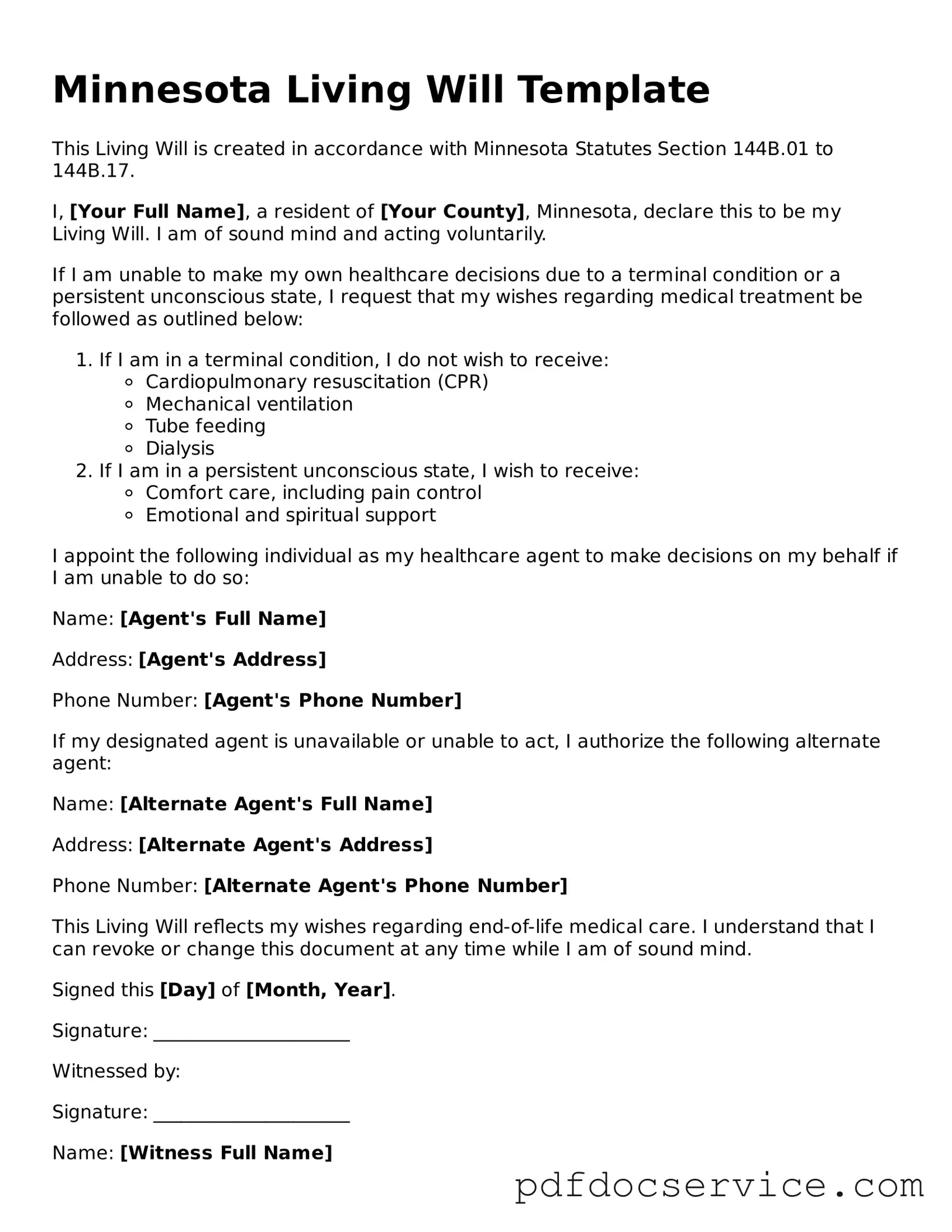Printable Living Will Template for Minnesota
A Minnesota Living Will form is a legal document that allows individuals to outline their preferences for medical treatment in the event they become unable to communicate their wishes. This form plays a crucial role in ensuring that a person's healthcare decisions are respected and followed. By completing a Living Will, individuals can take control of their medical care and relieve their loved ones of difficult decisions during challenging times.
Open Living Will Editor
